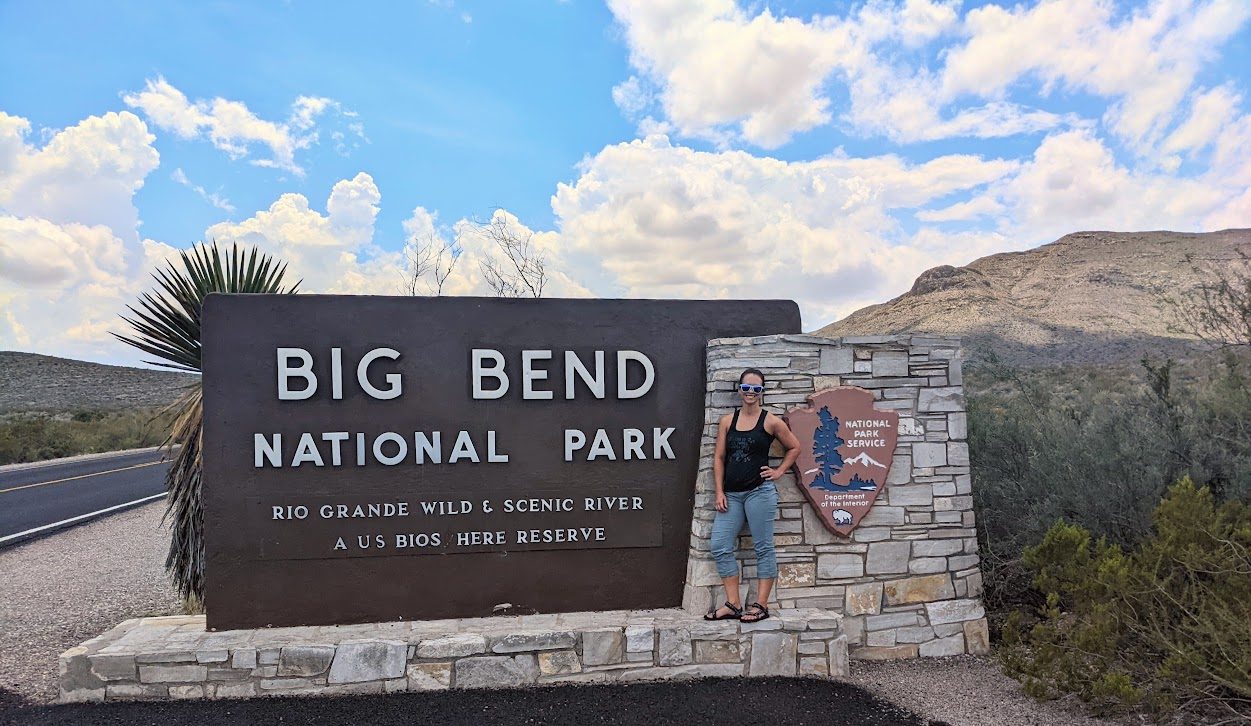Let’s talk details about the 5 visitor centers in Big Bend, as well as the basics of how to get there and where the 2 park entrances can be found. Use the table of contents to skip ahead if you want.
Table of Contents
Where is Big Bend National Park?
Big Bend National Park resides deep in southwest Texas, far from civilization (if you call Texans “civilized”). It stretches from just north of the Chisos Mountains down to the Rio Grande, and covers 1,252 square miles. That’s bigger than the state of Rhode Island!
The remote location, smaller campgrounds, and lack of nearby cities make it difficult to access. They also help to make it an oasis for those looking to really unplug and escape from civilization.
How Popular is Big Bend National Park?
The visitor numbers reflect just how wonderfully inaccessible Big Bend is to most.
About half a million people visit Big Bend National Park each year. Compare that to the 3.5 million that visit Yosemite National Park (which is smaller!) or Great Smoky Mountains National Park at 14 million (also smaller than Big Bend!). This place is the real deal and it will either revive your soul or eat you alive.
How to Enter Big Bend National park
The nearest airport is 235 miles away in Midland/Odessa, which is a 4 hour drive to the park itself. The nearest (small) towns are over an hour away from the park (Terlingua and Lajitas). It doesn’t get any more backcountry than this.
Park entrances are open 24/7 (no locking gates, hooray). There are two park entrances – one at Persimmon Gap, which is also a visitor’s center and one at Maverick Junction. Check the park’s visitor center hours here before you count on any of them because things are always subject to change.
You can pay your park fees at the entrances, provided they are open. If not, proceed to the nearest visitor center to square up. Entry fee is $30 per vehicle and covers all occupants for 7 days. Or you can use a National Parks pass
There are five visitor centers in the park – Panther Junction, Chisos Basin, Rio Grande Village, Persimmon Gap, and Castolon. These locations are where you can pay your entrance fee and talk to park rangers. Note: The rangers are super knowledgeable and helpful. I highly recommend talking to them if you have any doubts or questions about your plans.
Where are the Big Bend Visitor’s Centers?
Big Bend National Park has 5 visitor’s centers spread across its vast territory. Read on to learn about each one and what they have to offer.
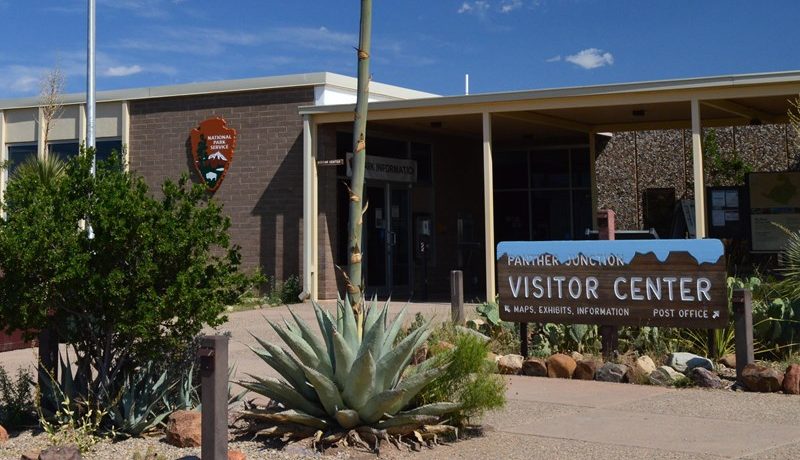
Panther Junction Visitor Center
The NPS website says that Panther Junction Visitor Center is the best place to start your visit, and I have to agree. This is the main visitor center and is at the heart of the park and can be accessed directly via Hwy 385. It is open year round.
Here you can get all the important permits, which you need for anything epic or especially exciting. If you plan to camp in the backcountry or paddle on the river you will need a permit – don’t get caught without one!
This is also the place to stock up on souvenirs and (very) basic hiking supplies. They sell books, posters, cards, shirts and all sorts of fun shit. There’s even a mini theater where you can watch a park orientation video.
Take advantage of the Wi-Fi here; it may be one of the last times you have it for a while.
Mailing address:
Note: You need to make arrangements with the Postal Service in advance to get your mail delivered to Big Bend, but it is possible.
Panther Junction Visitor Center
1 Panther Junction
Big Bend National Park , TX 79834
Also found at Panther Junction is a post office (I know you were worried about that), bathrooms, and a water filling station. Just down the road to the West is a gas station, a rare accommodation in a Texas park. You can purchase snacks, drinks, and ice there as well.
Chisos Basin Visitor Center
Further to the West, the Chisos Basin Visitor Center is also open year round. It has an exhibit on the flora and fauna found within the Chisos mountains. You can purchase a backcountry or river use permit here, as well. There is a much smaller bookstore at the Chisos Basin Visitor Center, along with bathrooms, a water filling station, wifi, and friendly park rangers.
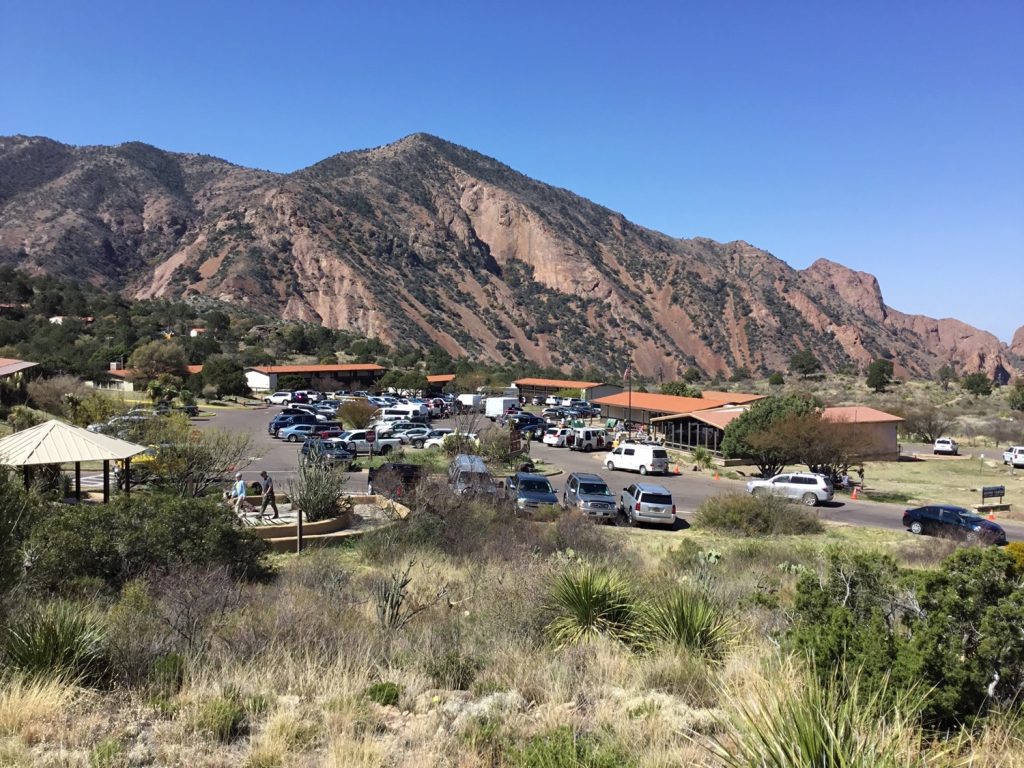
Near the Chisos Basin Visitor Center is a convenience store – again, a legendary amenity within such a remote park. There you can purchase some camping items, basic food items, ice, and the really important things like beer and chintzy souvenirs.
There is even an ATM available should you need cash for some weird reason, but please don’t do any shady drug deals in the park (or elsewhere).
Castolon Visitor Center
This visitor center is open only during the winter months. When it is open, river permits can be purchased & entrance fees can be paid.
There are restrooms available nearby. But the cool thing about Castolon is that the center is host to a Big Bend Natural History Association bookstore. All the profits from the books go back to the park, so if you’re looking to purchase a Big Bend book, please do it there! Over the years, they have put more than $2 million back into BBNP.
There is also a great deal of history in Castolon. Mexican and Anglo-American settlers lived here in harmony for many years. During the Mexican Revolution, the US War Department sent thousands of soldiers to Big Bend after a raid on Glenn Springs in 1916.
One of the areas they set up camp was Camp Santa Helena – otherwise known today as Castolon. This became a permanent post in 1919 and the structures you see today are remnants of this military past.
When the war ended and the troops dispersed, La Harmonia Company purchased the abandoned buildings and turned them into a general store and post office.
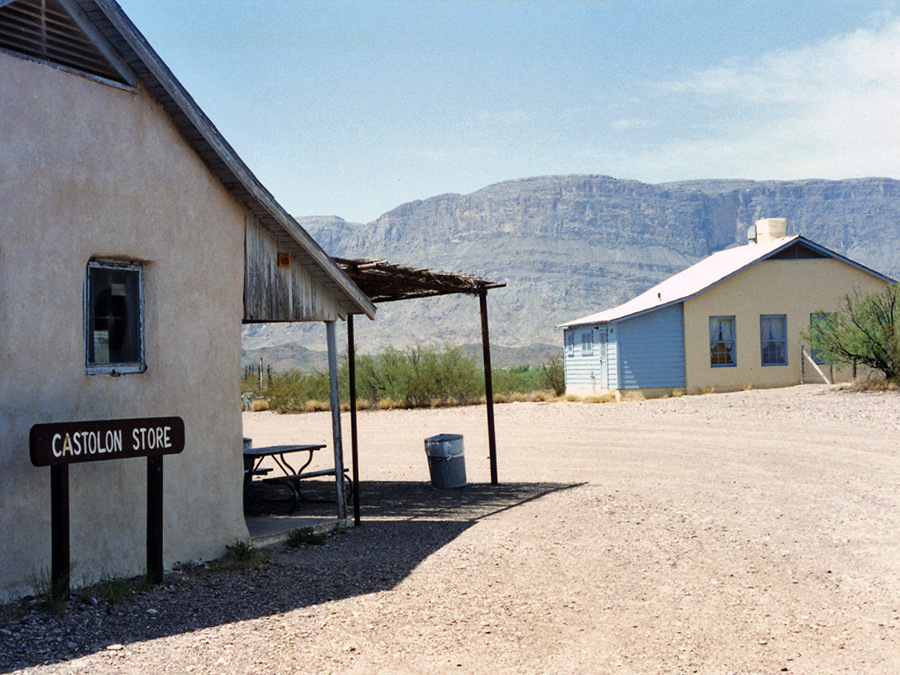
The current visitor center is in the Garlick House, added after the military abandoned Camp Santa Helena. It was originally inhabited by Fred Garlick, the farm manager for La Harmonia Company. There are historical interpretive exhibits in other buildings nearby as well.
Unfortunately, a fire in 2019 damaged many of the buildings in this area. Despite the devastation, it remains a treasure for the history buffs out there.
Rio Grande Village Visitor Center
Compared to amenities at some of the other locations, the Rio Grande Village Visitor Center is pretty lame. It sits just north of the Rio Grande Village developed area, where the convenience store and campgrounds are.
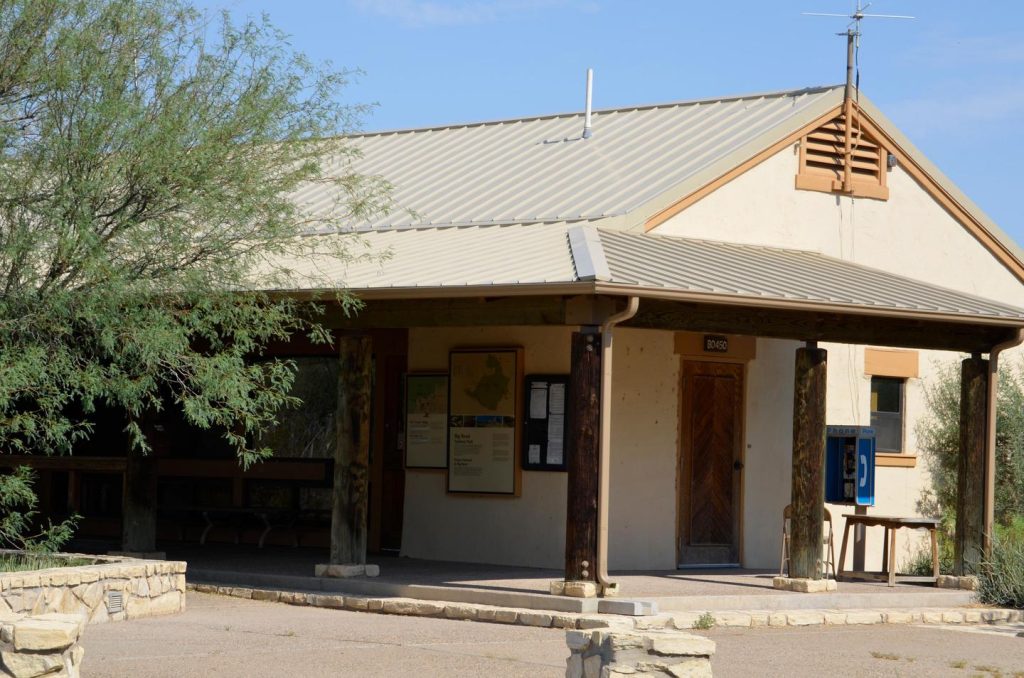
Here you can purchase a few books or get your river use permits, and chat with a ranger. There is potable water and toilets. There is also an exhibit on the history of the Rio Grande here – not so thrilling for me, but maybe you’re into that sort of thing.
¼ mile down the road is the good stuff. There you’ll find a store with loads of backcountry luxury, from clean water to wifi to coin operated showers and laundry.
I cannot give a report on the showers because when I stayed in the Rio Grande Village, the store lost power and shut down. As a result, I stayed stinky until I made it home.
But, I have heard from the very reliable internet that the showers are often “down” for one reason or another, so my experience may not be unique. Keep that in mind before you count on them to be working.
The store and service station also sells food, RV and camp stuff, and some souvenirs. Gasoline is available during business hours. Propane is also available Monday-Friday from 10am-4pm according to posted hours.
Persimmon Gap Visitor Center
Permission Gap Visitor Center, located at the north park entrance, is one of the seasonal centers – it is only open November 1-April 14. It features a bookstore, exhibits, and restrooms. They also issue river permits for the Lower Canyons here.
This location reportedly also has a mini-theater to view park orientation films, though I’ve never taken advantage of it.
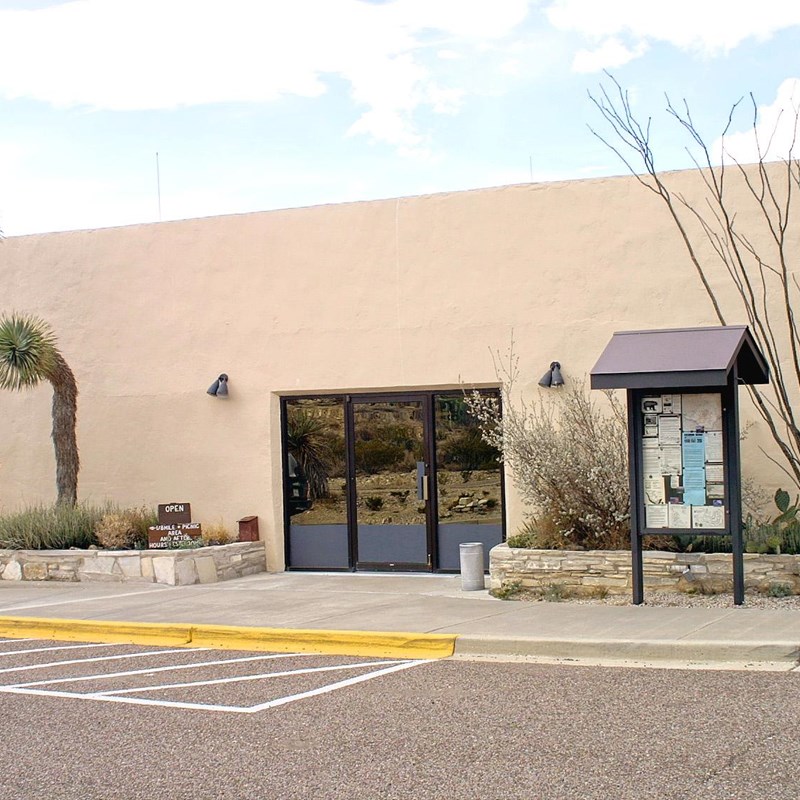
The building may not seem like much to look at, but it has a long history. You can read more about the history of the Persimmon Gap Visitor Center here.
If you’re planning a trip to Big Bend National Park, learn everything you need to know about Big Bend here.

